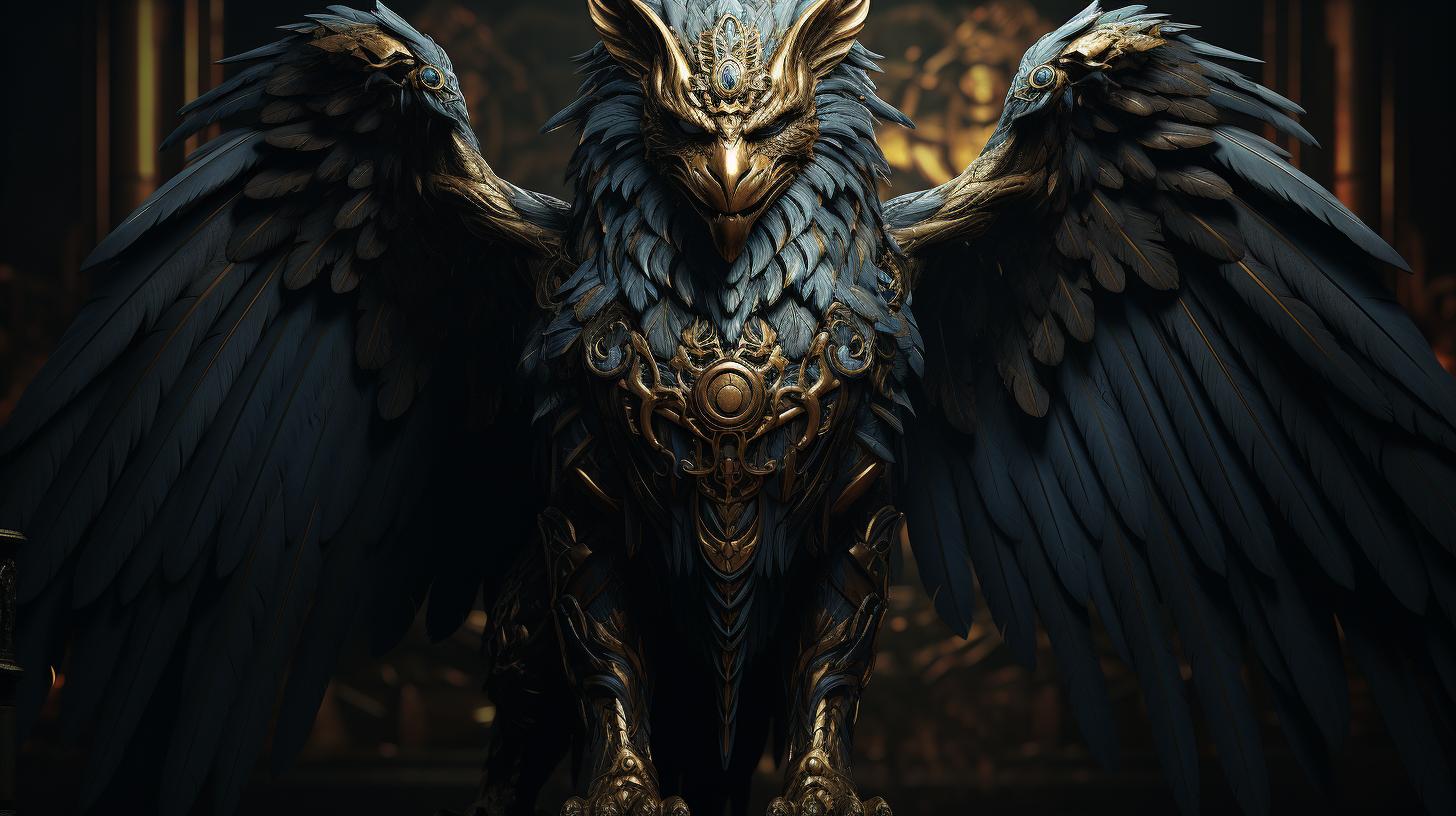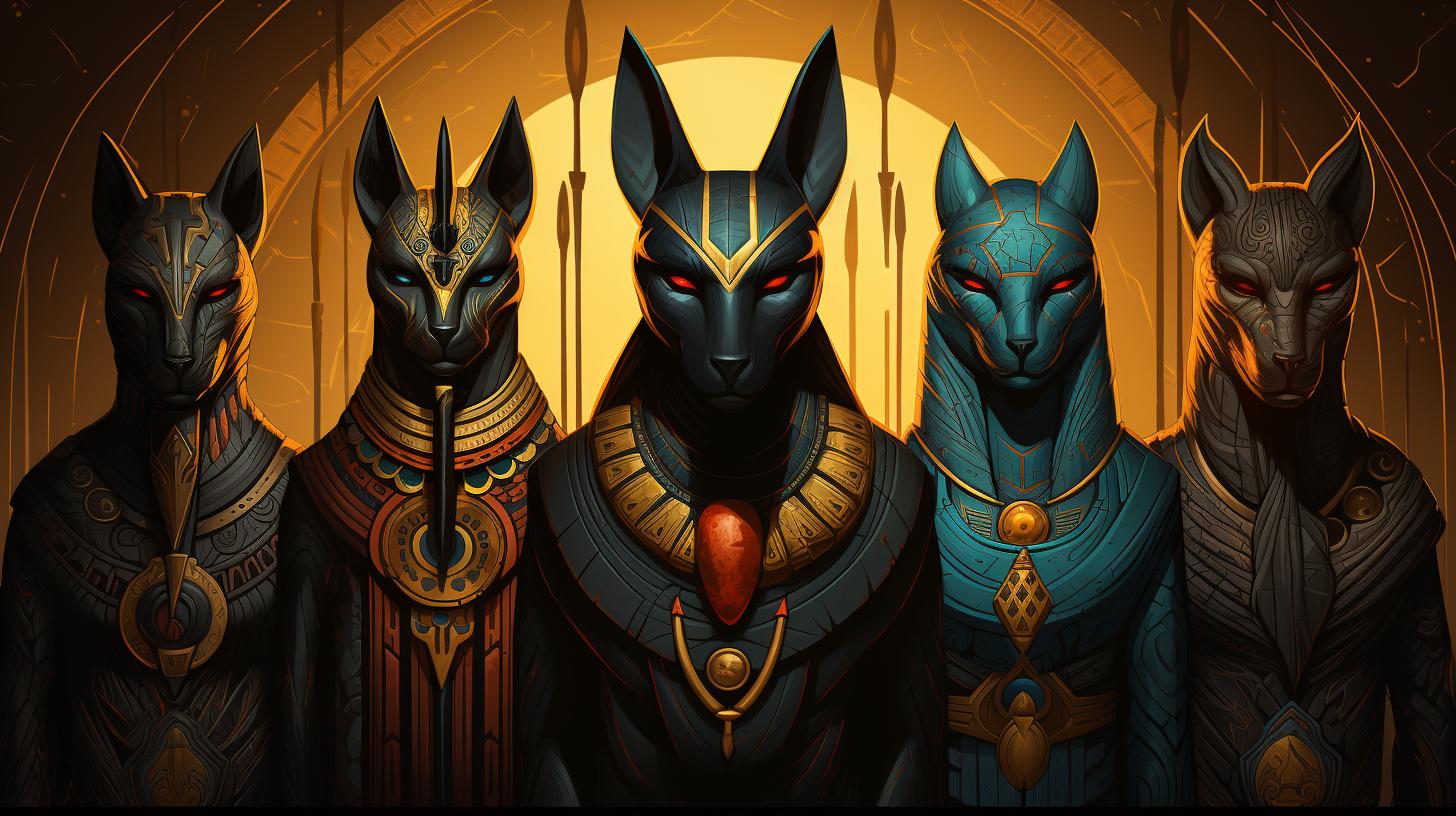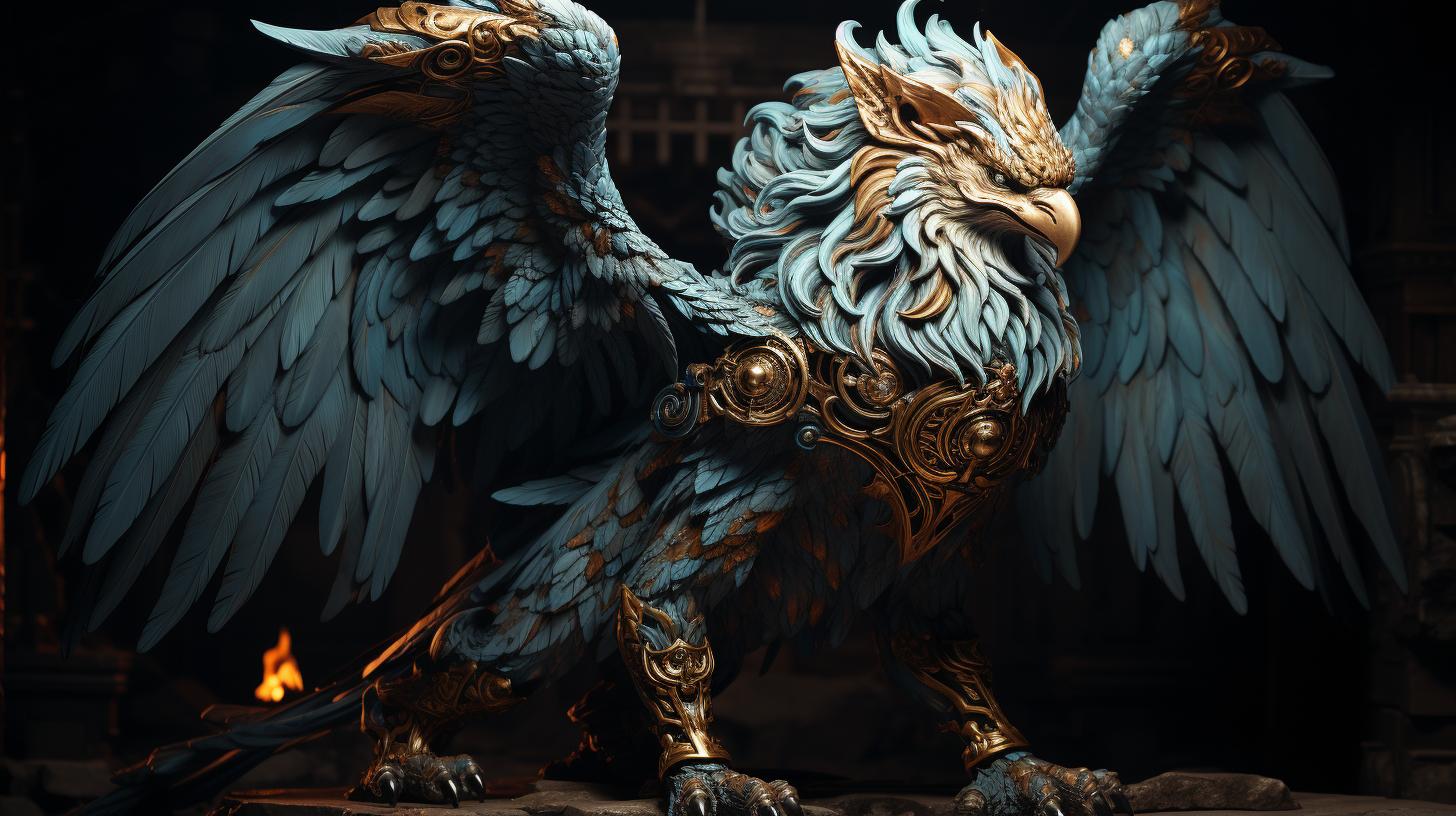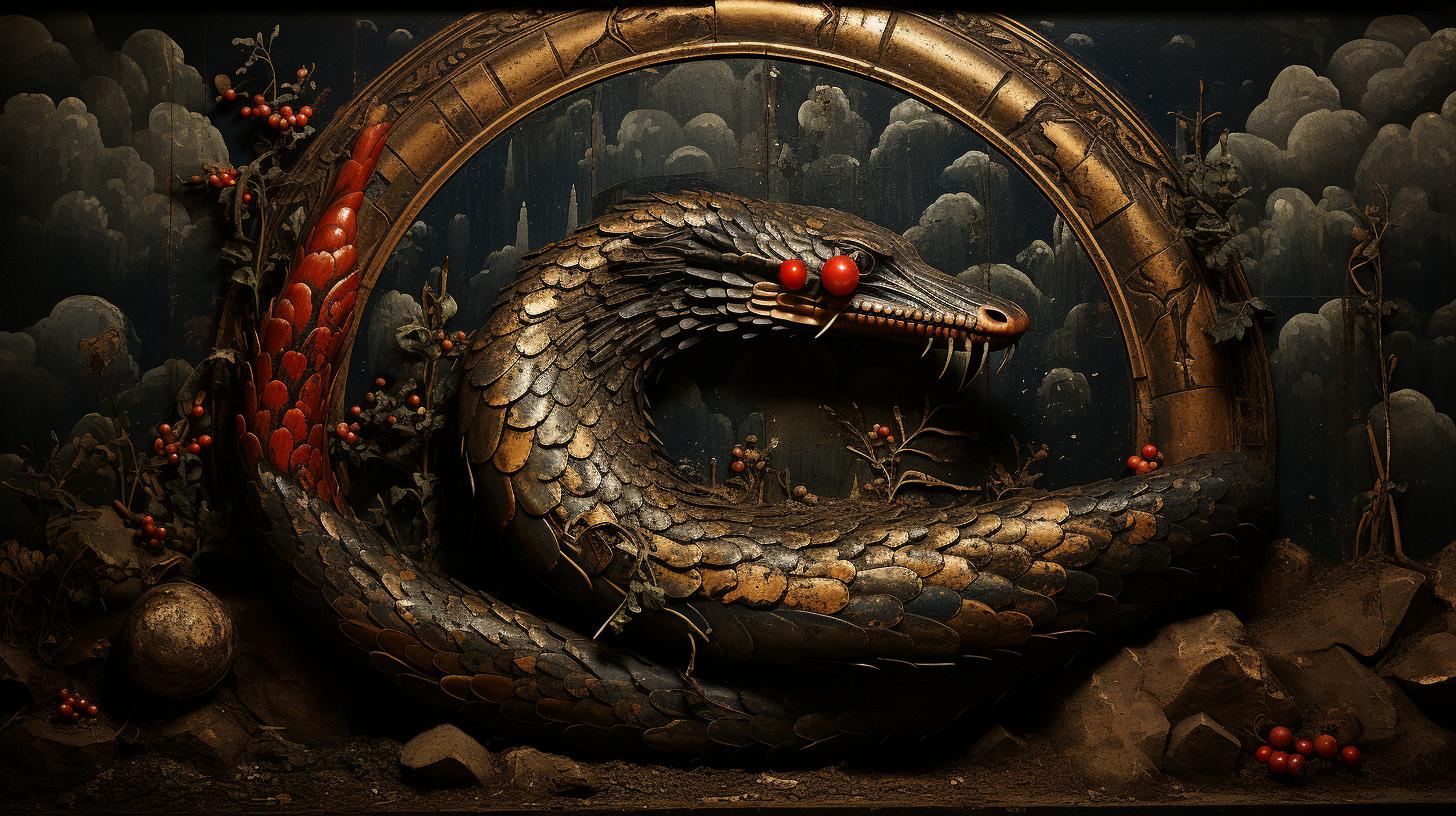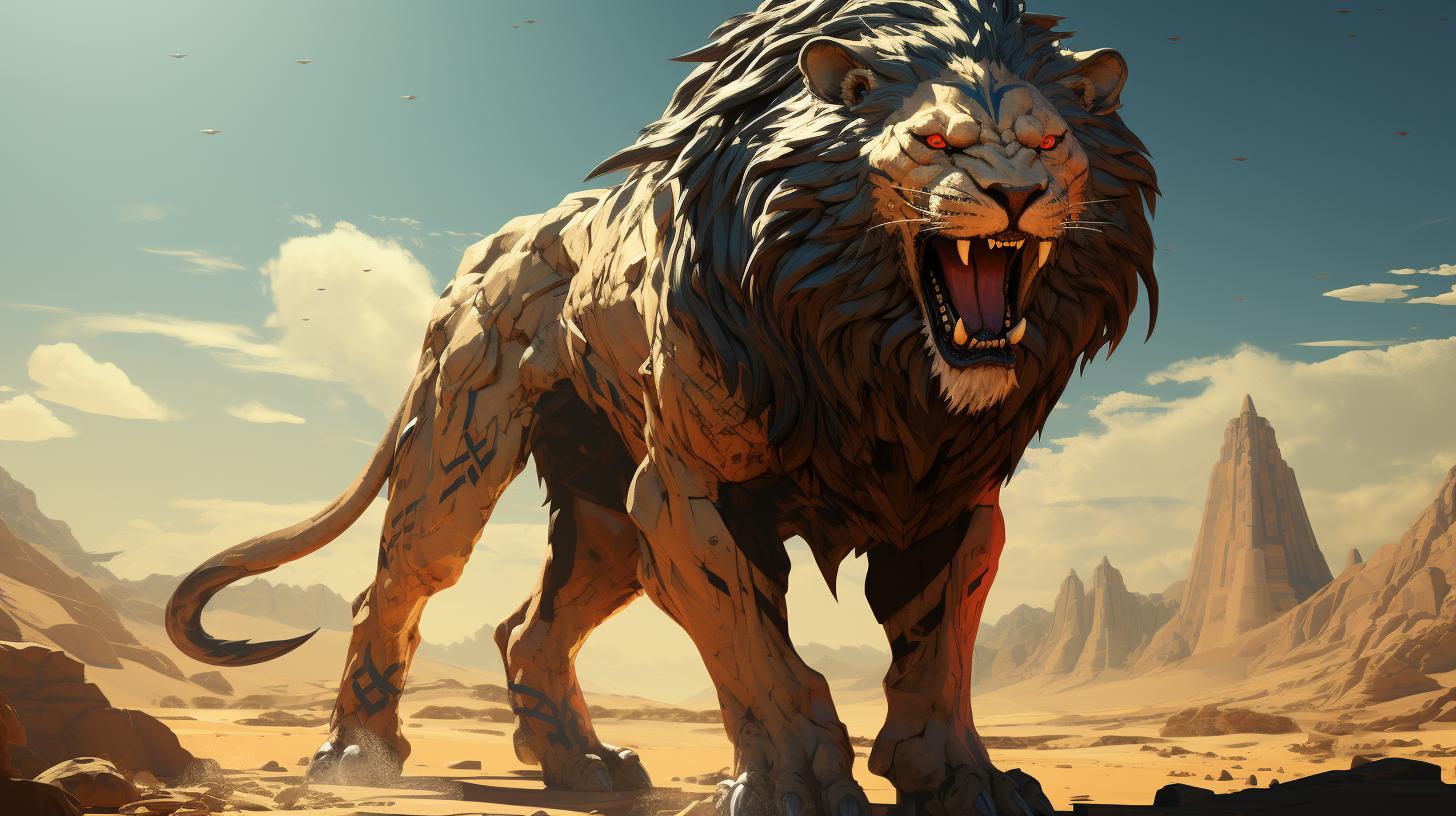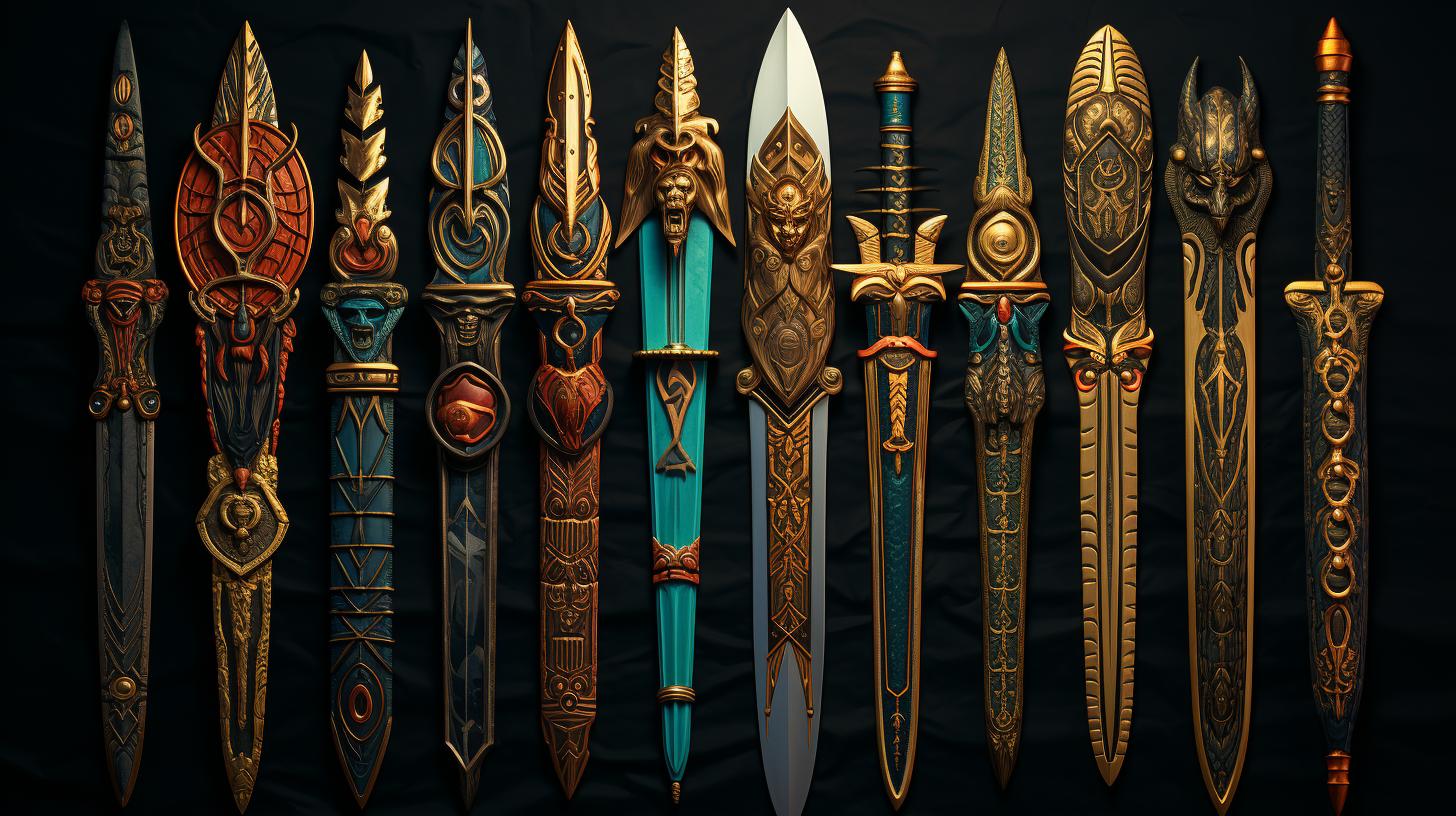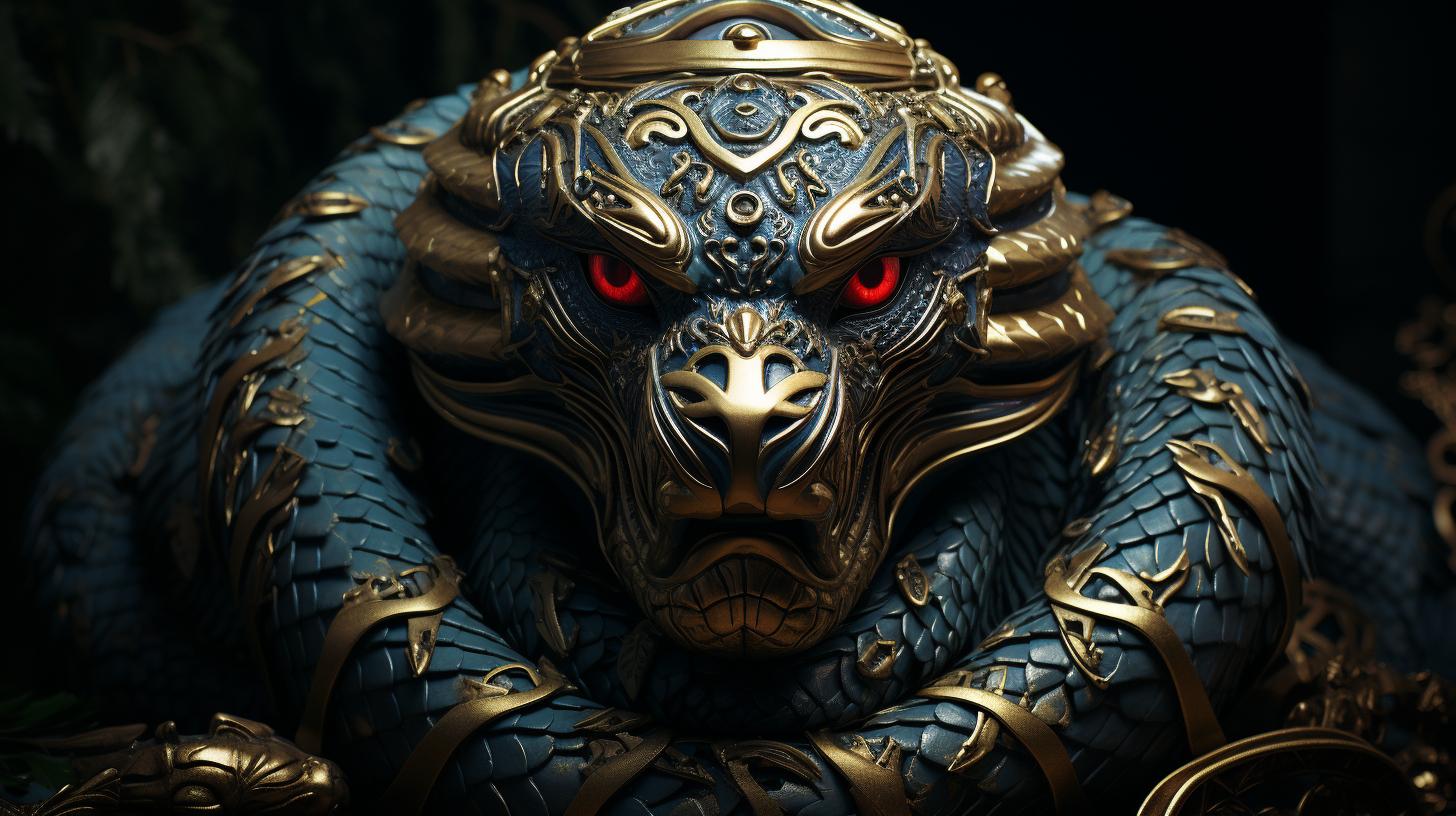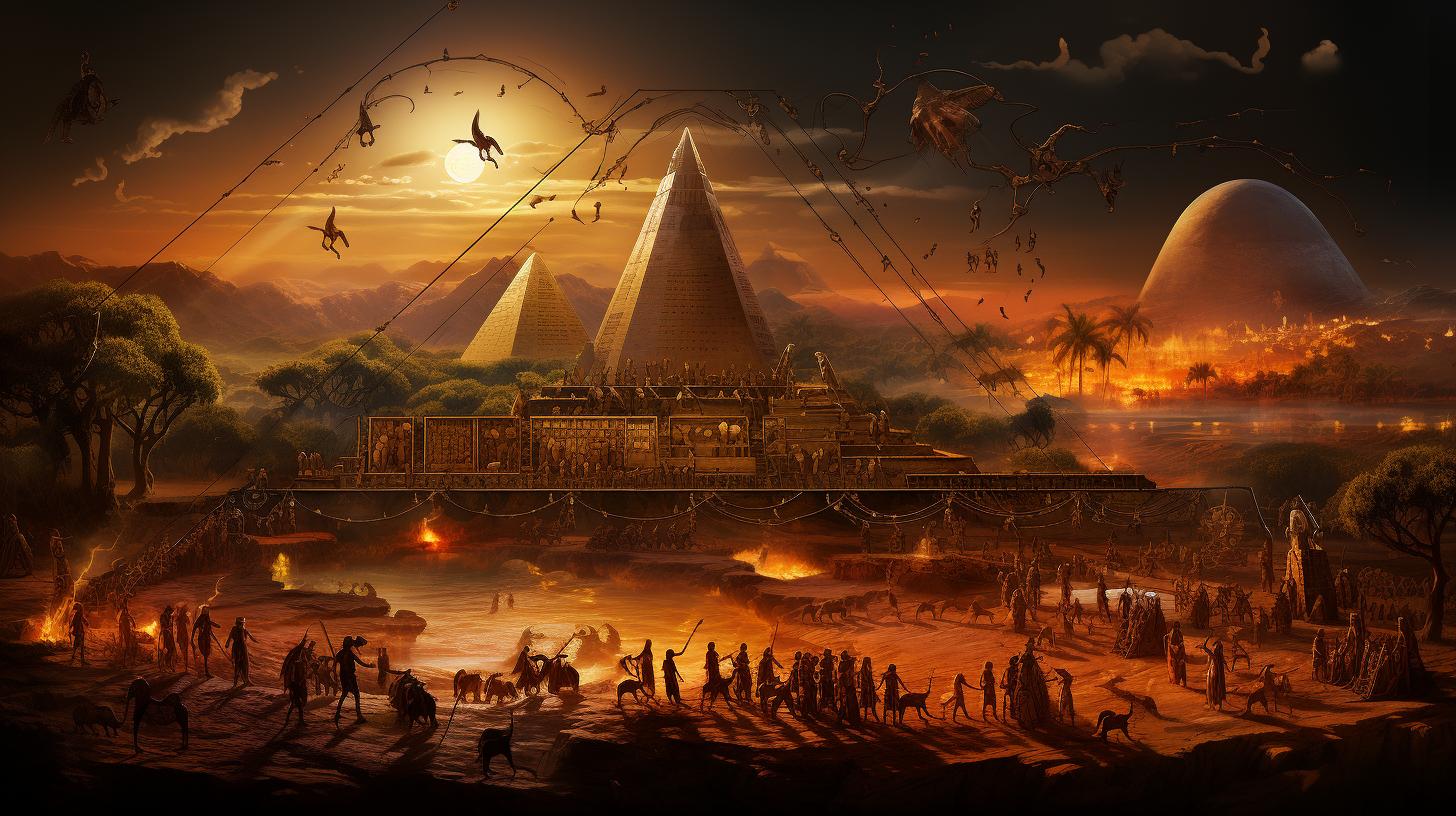Egyptian Mythology Creatures: Unveiling the Legendary Beasts of Ancient Egypt
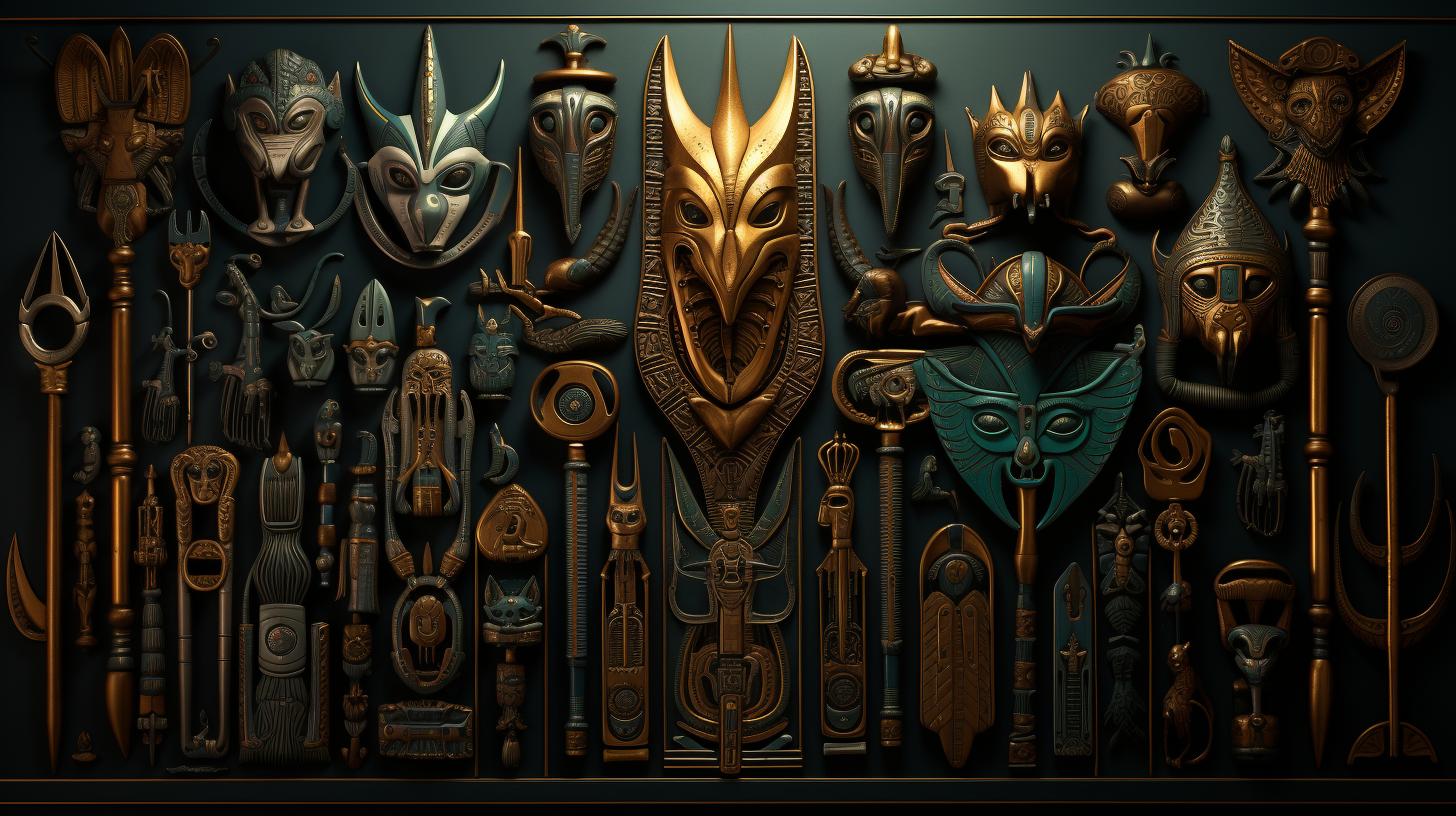
Egyptian Mythology Creatures played a significant role in the ancient Egyptian beliefs and culture. These legendary beings encompassed a range of unique creatures, each with its own symbolism and mythology.
From the fearsome Ammit, the Devourer of the Dead, to the enigmatic Sphinx and the powerful Uraeus, these creatures held both reverence and fear in the hearts of the ancient Egyptians.
In this article, we delve into the intriguing world of Egyptian Mythology Creatures, exploring their origins, symbolism, and significance in the rich tapestry of ancient Egyptian folklore and religion.
Egyptian Gods and Goddesses
In ancient Egypt, gods and goddesses played a vital role in the beliefs and daily lives of the people.
They were seen as powerful beings with control over different aspects of life, such as nature, fertility, and the afterlife.
Role of gods and goddesses in ancient Egypt
The gods and goddesses of ancient Egypt were revered and worshipped as divine entities that could influence both the mortal world and the spiritual realm. They were believed to have the power to grant blessings, protect the people, and help navigate the challenges of life.
Depiction and symbolism of Egyptian deities
Each deity in Egyptian mythology was depicted with specific symbols and attributes that represented their unique characteristics and powers. For example, the falcon-headed god Horus symbolized protection and kingship, while the goddess Isis was often portrayed with a throne-like headdress, symbolizing her role as the queen of heaven and earth.
Notable gods and goddesses in Egyptian mythology
Ancient Egyptian mythology featured a plethora of gods and goddesses, each with their own distinct roles and legends. Some notable deities included:
- Ra: The sun god and creator of the world, often depicted with the head of a falcon and the sun disk.
- Osiris: The god of the afterlife and resurrection, represented as a mummified figure.
- Bastet: The goddess of home, fertility, and protection, often portrayed as a lioness or domestic cat.
- Anubis: The god of embalming and the afterlife, depicted with the head of a jackal.
- Hathor: The goddess of love, beauty, and joy, often represented with the head of a cow or as a woman with cow’s ears.
These deities and many others held significant roles in Egyptian mythology, shaping the beliefs and practices of the ancient Egyptians.
Ammit: The Devourer of the Dead
Ammit, known as the Devourer of the Dead, was a mythical creature in ancient Egyptian mythology. It was a chimera-like being with the head of a crocodile, the front legs of a lion, and the hind legs of a hippopotamus.
Ammit embodied the fearsome and anthropophagous predators that ancient Egyptians dreaded.
Description and symbolism of Ammit
Ammit’s unique combination of animal features represented the ferocious power of nature and the dangers that awaited souls in the afterlife. The crocodile head symbolized the aggressive and deadly nature of the creature.
The lion front legs signified its strength and authority, while the hippopotamus hind legs represented chaos and the dangerous waters.
Ammit’s appearance served as a warning to the deceased in the Hall of Ma’at.
The Egyptians believed that after death, one’s heart would be weighed against the feather of Ma’at, the goddess of truth and justice. If the heart was found to be heavier than the feather, Ammit would devour it, condemning the soul to eternal torment.
Role of Ammit in the afterlife beliefs of ancient Egyptians
Ammit played a crucial role in the ancient Egyptian concept of the afterlife. The Egyptians believed in the existence of an afterlife where the souls would be judged for their actions on earth.
Ammit’s presence in the judgment process added a significant element of fear and consequence.
The fear of being devoured by Ammit motivated the ancient Egyptians to live righteous lives and follow the codes of Ma’at.
They believed that by maintaining moral integrity and leading virtuous lives, they could avoid Ammit’s wrath and secure a peaceful afterlife.
In conclusion, Ammit, the Devourer of the Dead, was a significant creature in ancient Egyptian mythology.
Its distinctive appearance and symbolic role emphasized the consequences of a corrupt heart and the ultimate judgement that awaited souls in the afterlife. The awe-inspiring power of Ammit created a sense of accountability and moral responsibility among the ancient Egyptians, shaping their beliefs and actions during their lives.
Apep: The Enemy of the Sun
The mythology surrounding Apep, also known as Apophis, is deeply rooted in ancient Egyptian beliefs. Apep was depicted as a colossal serpent, stretching from head to tail, with a menacing presence that threatened the sun god, Ra.
Mythology surrounding Apep
According to legend, Apep dwelled in the underworld and attempted to thwart the sun’s journey across the sky each day. It was believed that every morning, Apep engaged in a fierce battle with Ra, coiled just beneath the horizon.
The outcome of this monumental clash had profound implications for the ancient Egyptians.
Significance of Apep’s battles with Ra
The intense struggles between Apep and Ra symbolized the eternal struggle between order and chaos, light and darkness. Ra’s victory over Apep ensured the continuation of life and the triumph of creation over destruction.
These battles served as powerful metaphors for the constant cosmic struggle that underpinned Egyptian mythology.
Effects of Apep’s actions on ancient Egyptian beliefs
The actions of Apep had far-reaching effects on the ancient Egyptians’ religious beliefs. Apep’s attempts to consume Ra and plunge the world into darkness represented the ultimate threat to cosmic harmony, requiring constant vigilance and protection.
The defeat of Apep by Ra reaffirmed the power of the sun god and reinforced the belief in the prevailing order of the universe.
In conclusion, Apep played a crucial role in Egyptian mythology as the embodiment of chaos and the perpetual enemy of the sun god Ra.
The battles between Apep and Ra served as powerful symbols of the eternal struggle between light and darkness, order and chaos. Understanding the mythology surrounding Apep helps shed light on the complex cosmology and religious beliefs of ancient Egypt.
Bennu: The Rebirth Bird
Bennu, also known as the Rebirth Bird, holds a remarkable connection to the myth of the phoenix, a legendary creature often associated with rebirth in various cultures. In Egyptian mythology, Bennu represented resurrection and renewal.
It was believed to be the companion of Ra, the sun god, and was associated with the daily cycle of the sun rising and setting.
Symbolism of Bennu in Egyptian culture
In Egyptian culture, Bennu symbolized the cycle of life, death, and rebirth.
Its association with Ra reinforced its connection to the sun and the concept of eternal renewal. The bird’s graceful presence and ability to rise above the ashes represented the enduring spirit of the Egyptian people.
Role of Bennu in the concept of rebirth
Bennu played a pivotal role in the Egyptian concept of rebirth. It was believed that Bennu would appear at the dawn of a new era, signaling the start of a fresh cycle of creation.
This idea reflected the Egyptians’ belief in the cyclical nature of life and the potential for transformation and regeneration.
As the Rebirth Bird, Bennu embodied the hope for immortality and the eternal continuation of existence beyond death.
Its influence pervaded religious rituals and funeral practices, where the concept of rebirth was of paramount importance.
The enduring symbolism of Bennu in Egyptian culture highlights the profound significance of the cycle of life and death within their beliefs, firmly establishing Bennu as a captivating and integral figure in the mythology of ancient Egypt.
El Naddaha: The Enchantress of the Nile
The mystical creature known as El Naddaha holds a significant place in Egyptian mythology, particularly in relation to the enchanting waters of the Nile. El Naddaha is described as a beautiful creature whose captivating voice lures men towards the riverbanks.
Once the unsuspecting victims draw near the water, El Naddaha seizes and drowns them, symbolizing the dangers that the Nile holds.
Description and folklore around El Naddaha
El Naddaha is often depicted as an alluring figure, exuding charm with her enchanting voice. The tales describe her as a seductive being, capable of captivating even the most cautious individuals.
Her appearance varies in different accounts, sometimes resembling a siren-like creature while in others taking on a more ethereal form.
Legends surrounding El Naddaha have been passed down through generations, warning people of the treacherous powers she possesses.
The folklore narrates tales of unsuspecting travelers being drawn towards her bewitching melodies, only to meet a watery demise.
Relationship between El Naddaha and Egyptian mythology
While El Naddaha’s origins within Egyptian mythology remain relatively recent, she has found her place in tales and folklore alongside the ancient deities. Though not formally part of the Egyptian pantheon, the captivating allure and danger associated with El Naddaha have woven her into the cultural fabric of the region.
It is worth noting that El Naddaha is typically associated with the Muslim genies rather than the traditional Egyptian deities. This indicates a blending of belief systems and cultural influences over time in the land of the Nile.
Cultural significance of El Naddaha’s role
El Naddaha serves as a cautionary figure in Egyptian folklore, reminding people of the potential perils that lurk within the sacred waters of the Nile. Her role showcases the reverence and respect ancient Egyptians had for their life-giving river, while simultaneously highlighting the inherent dangers that existed within its depths.
This enchantress’s presence in the mythological tapestry of Egypt contributes to the broader understanding of the complex and rich folklore of the region, providing insight into the cultural beliefs and traditions that have shaped Egyptian society throughout history.
The Griffin: Guardian of Treasures
In Egyptian mythology, the Griffin was a legendary creature known for its role as the protector of valuable possessions. Let’s explore the definition, origins, symbolism, and its significant role in ancient Egypt.
Definition and origins of the Griffin in Egyptian mythology
The Griffin, also referred to as “Shedu” in Egyptian mythology, was a mythical creature with the body of a lion and the head of an eagle. Its origins can be traced back to ancient Mesopotamia, but it was also mentioned in ancient Egyptian texts.
The Egyptians believed that the Griffin possessed remarkable strength and endurance, making it an ideal guardian of treasures and sacred sites. Its powerful combination of lion and eagle symbolism represented its protective nature and its ability to soar high and be watchful.
Symbolism of the Griffin in ancient Egypt
The Griffin held significant symbolism in ancient Egypt. The lion component of the creature represented strength, courage, and nobility, while the eagle symbolized wisdom, vision, and divine connection. This fusion of attributes made the Griffin a symbol of divine authority and protection.
A depiction of the Griffin was often placed in strategic locations, such as at the entrances of temples or near pharaohs’ tombs, to ward off evil spirits and deter thieves.
The Griffin’s presence represented the sanctity of these spaces and ensured the safety of the treasures within.
Role of the Griffin as a protector of valuable possessions
The Griffin’s primary role was to safeguard valuable possessions, including sacred artifacts, riches, and royal treasures. Its imposing stature and fierce appearance served as a powerful deterrent against potential intruders and those with ill intentions.
Ancient Egyptians believed that the Griffin’s vigilant presence protected these treasures from both physical and spiritual threats. Its role as a guardian instilled a sense of security and reverence, ensuring the preservation of Egypt’s most precious treasures for generations to come.
Thus, the Griffin played a crucial role as the guardian of treasures in ancient Egypt, combining the strength of a lion and the wisdom of an eagle to protect and preserve the invaluable riches of the Egyptian civilization.
The Serpopard: Symbol of Chaos
The Serpopard was a mythical creature in ancient Egyptian mythology that had the body of a leopard and the head of a serpent. Its unique combination of these two powerful animals represented the chaos and danger that lay beyond the borders of Egypt during the pre-dynastic period.
Features and Symbolic Meaning of the Serpopard
The Serpopard’s physical appearance embodies the duality of nature, combining the agility and strength of a leopard with the cunning and mysterious qualities associated with serpents. This representation conveys the belief in the ancient Egyptian worldview that the world was a constant battle between order and chaos.
Symbolically, the Serpopard served as a reminder of the unpredictable and untamed forces that threatened the civilized existence of ancient Egypt. Its presence conveyed the idea that maintaining order and harmony within their society was crucial to preserving their way of life.
Connection between the Serpopard and Pre-dynastic Egypt
The concept of the Serpopard can be traced back to the pre-dynastic period in Egypt, which was characterized by a time of transition and territorial conflicts. It is believed that the Serpopard symbolized the dangers and unknown territories that existed beyond Egypt’s established borders during this tumultuous era.
As the pre-dynastic Egyptians ventured into unexplored regions, they encountered unfamiliar and potentially hostile forces. The Serpopard embodied these encounters and represented the chaos they faced beyond the boundaries of their civilization.
Interpretations and Theories about the Serpopard’s Significance
Various theories exist regarding the significance of the Serpopard. Some scholars propose that it may have represented the vitality and natural energy found in the wilderness, contrasting with the order and structure of Egyptian society.
Others suggest that the Serpopard symbolized the primal instincts and primal forces that needed to be controlled and tamed for the overall stability of the Egyptian civilization. It served as a reminder of the constant struggle between civilization and the inherent wildness of the world.
While the exact meaning of the Serpopard’s symbolism may remain uncertain, its presence in ancient Egyptian iconography and mythology highlights the ancient Egyptians’ recognition of the precarious balance between order and chaos.
The Sphinx: Enigmatic Guardian
The Sphinx, with the body of a lion and the head of a human, holds a prominent place in Egyptian mythology. Its origins and purpose have long intrigued scholars and adventurers alike.
Let’s delve into the intriguing details surrounding the Sphinx.
Description and Mythology Surrounding the Sphinx
The Sphinx is an imposing creature, standing tall with its enigmatic expression gazing into the distance. It is believed to represent a protective deity associated with Horus, the falcon-headed god.
The most famous Sphinx, located at Giza, is attached to the Great Pyramid of Khafre, adding to its mystique.
According to mythology, the Sphinx acted as a guardian, both physically and spiritually.
Its presence served to ward off evil spirits and protect the sacred spaces, such as temples and tombs, from any malevolent forces. The belief in its divine role made it an integral part of ancient Egyptian religious practices.
Role of the Sphinx in Ancient Egyptian Architecture
The Sphinx played a significant role in the architectural landscape of ancient Egypt. Positioned strategically at the entrances of temples and tombs, it symbolized protection and authority. Its imposing presence conveyed a sense of power and deterrence, warning intruders of potential consequences.
Furthermore, the Sphinx served as a visual representation of the pharaoh’s divine connection. As the pharaoh was believed to be the earthly embodiment of divinity, the Sphinx’s presence emphasized their authority and legitimacy in the eyes of the people.
Significance of the Sphinx’s Riddles and Challenges
One of the most captivating aspects of the Sphinx’s mythology is its association with riddles and challenges. According to legend, the Sphinx posed complex riddles to those who sought to enter sacred spaces.
These riddles tested the wisdom, knowledge, and worthiness of individuals.
Successfully answering the Sphinx’s riddles was seen as a demonstration of intellectual prowess and deserving access to the sacred site.
However, failure meant facing dire consequences befitting the violation of the divine realm.
The enigmatic nature of the Sphinx’s riddles continues to captivate the imagination, leaving us with a sense of mystery surrounding this iconic guardian of ancient Egypt.
- The Sphinx represented a protective deity and served as a guardian of sacred spaces.
- It played a crucial role in ancient Egyptian architecture as a symbol of power and authority.
- The Sphinx’s riddles challenged individuals and tested their wisdom and worthiness.
By exploring the intriguing aspects of the Sphinx, we gain a deeper understanding of the complex mythology and beliefs of ancient Egypt.
Uraeus: The Upraised Cobra
The Uraeus, characterized by an upright cobra, held great symbolism and representation in ancient Egyptian culture. It was not merely a decorative element but carried significant meaning in various aspects of Egyptian society.
Let’s delve deeper into its symbolism, connection with pharaohs’ power, and its importance in the religious context of ancient Egypt.
Symbolism and representation of the Uraeus in Egyptian culture
The presence of the Uraeus on the royal headdress and crowns signified the power and majesty of the pharaoh. The cobra, with its raised head, represented protection against enemies and conveyed the authority of rulership.
The Uraeus was seen as a divine symbol, linked to the goddess Wadjet, who was associated with protection and sovereignty.
Significance of the raised cobra
The upraised cobra embodied the watchful and vigilant nature of the pharaoh, ready to strike against any threat to their kingdom. Its poised position represented wisdom, control, and the ability to bring order amidst chaos.
The Uraeus also served as a visual reminder of the pharaoh’s divine right to rule and their connection to the gods.
Wadjet, the protective goddess
Wadjet, often depicted as a cobra or a woman with the head of a cobra, was believed to safeguard the pharaoh and their dominion. The Uraeus, an embodiment of Wadjet, symbolized her divine authority and presence, ensuring the pharaoh’s protection and prosperity.
Connection between the Uraeus and pharaohs’ power
The Uraeus held immense significance in relation to the pharaohs’ power and divine authority. It visually proclaimed their position as the chosen intermediary between the gods and the mortal realm. The upraised cobra on the royal regalia reinforced the pharaoh’s legitimacy, proclaiming their ability to maintain order, justice, and protect their kingdom.
Divine connection
The Uraeus signified the pharaoh’s divine lineage and their association with the gods. Through the Uraeus, the pharaoh was believed to possess the power and favor of the deities, amplifying their effectiveness as rulers.
It established a spiritual bond between the pharaoh and the Egyptian pantheon, elevating their status above ordinary mortals.
Symbols of sovereignty
The Uraeus was not only a spiritual emblem but also a visible marker of kingship. Its presence on the pharaoh’s crown and regalia indicated their control over the land and its people.
The Uraeus symbolized the pharaoh’s commanding authority, ruling over both the mortal realm and the divine forces that governed the universe.
Importance of the Uraeus in the religious context of ancient Egypt
In the religious context of ancient Egypt, the Uraeus played a vital role in rituals, ceremonies, and temple architecture.
Its presence in religious iconography and sanctuaries emphasized the spiritual connection between divinity and mankind.
Protective role in temples
Uraei (plural of Uraeus) were often present at the entrances of temples, guarding against malevolent spirits and evil forces. They were believed to ward off any threats to the sanctity of the temple space and its worshippers, ensuring a sacred and secure environment for religious practices.
Representation of divine authority
As a symbol of divine authority, the Uraeus adorned the statues of gods and goddesses, reinforcing their power and presence. It served as a visual cue for worshippers, reminding them of the gods’ benevolence and protection, inspiring devotion and reverence.
The Uraeus, with its symbolic significance, established a tangible connection between mortal rulers, divine authority, and the spiritual beliefs of ancient Egypt. Its visual representation and ceremonial role reflected the complex intertwining of religion and monarchy in this ancient civilization.
.











